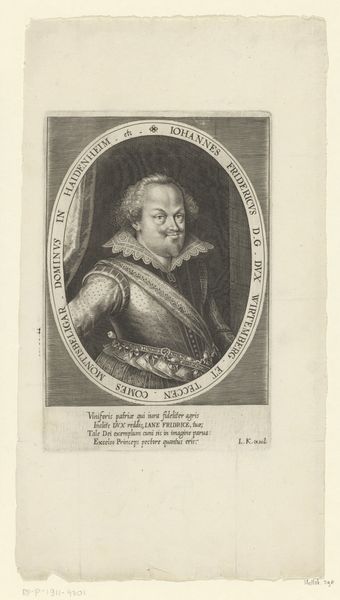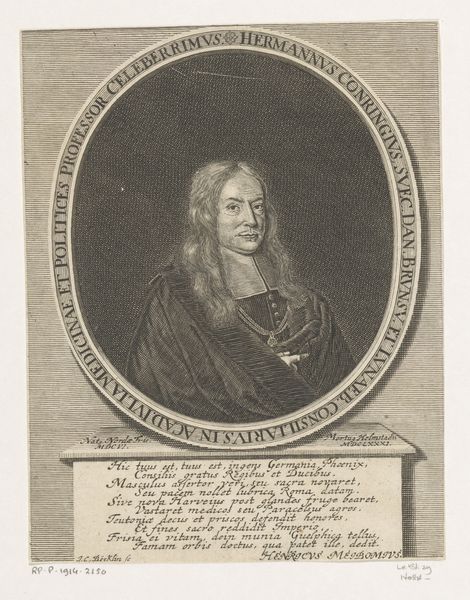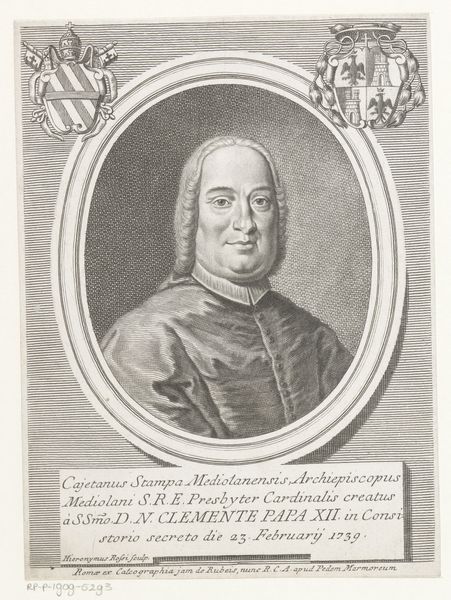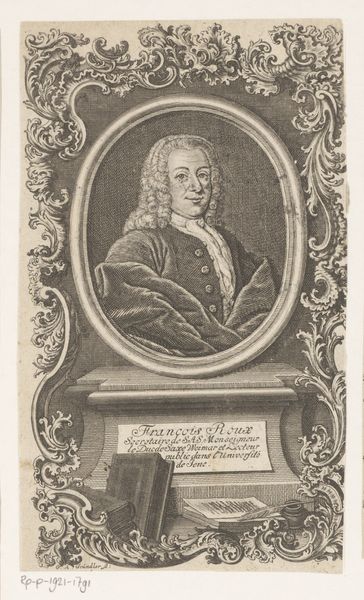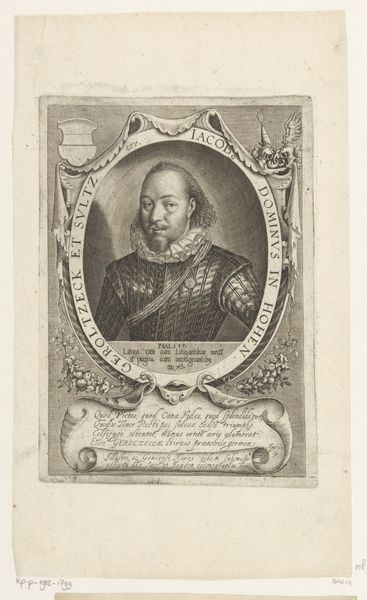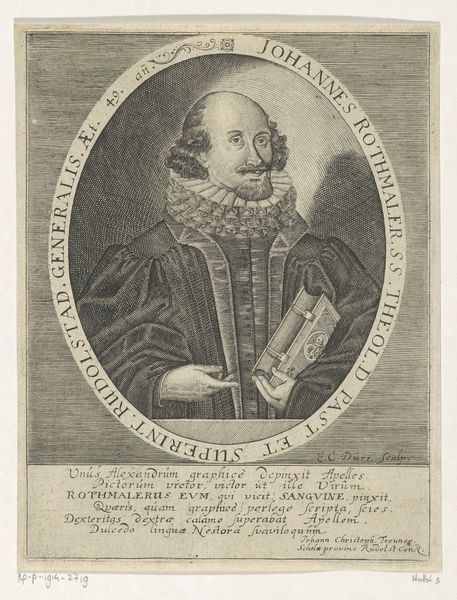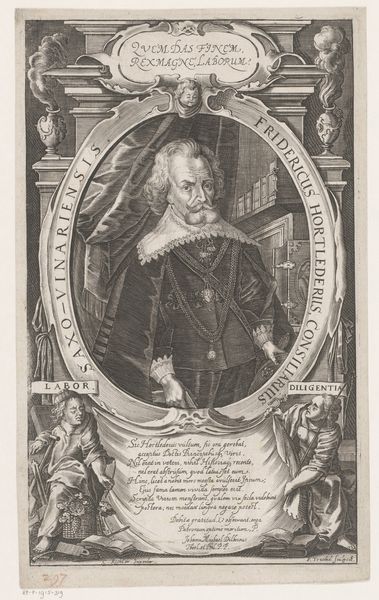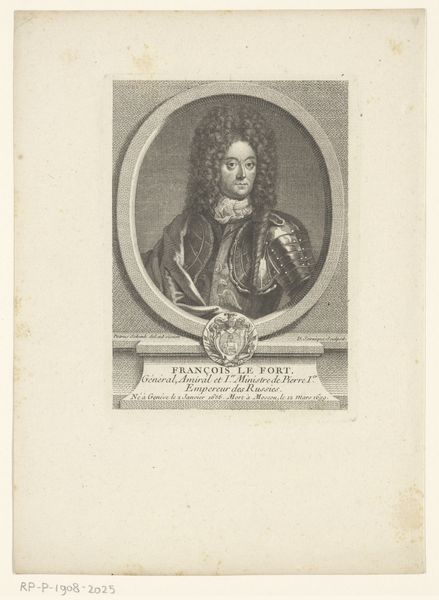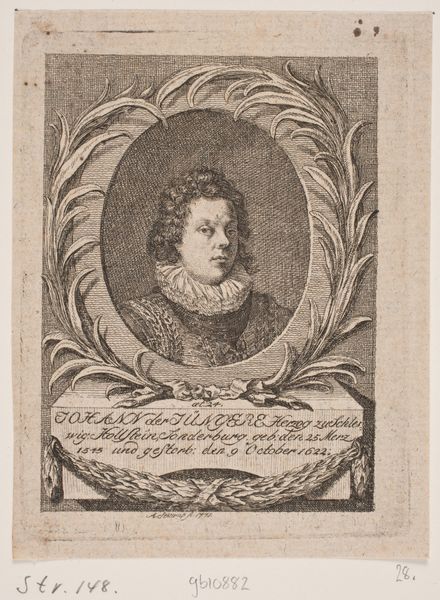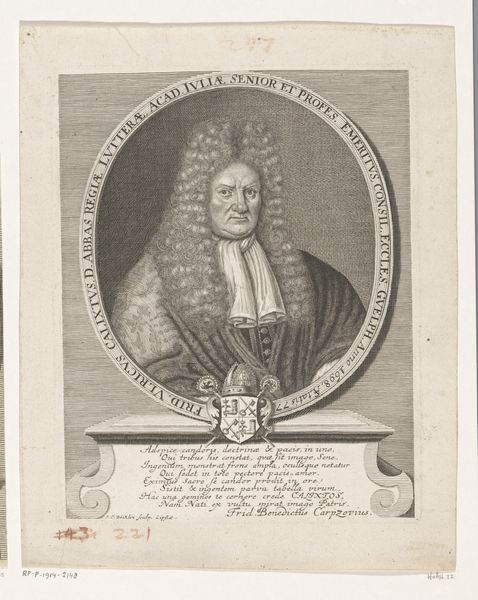
print, engraving
portrait
aged paper
baroque
old engraving style
figuration
line
history-painting
academic-art
engraving
Dimensions: height 178 mm, width 106 mm
Copyright: Rijks Museum: Open Domain
Editor: This is a portrait of Gustav Horn by Jacob van der Heyden, dating sometime between 1602 and 1645. It's an engraving, so it's interesting to see how the artist created detail with just lines. How would you interpret this work, given its medium and historical context? Curator: Well, as a materialist, I'm immediately drawn to the engraving process. Think about the labour involved. Each line is a physical act, a mark made on a plate that then gets reproduced. The image isn't just about Gustav Horn, it’s about the system that produces and circulates his image. Consider the consumption of this print, who would have had access to this imagery, and how might it be valued by its audience? Editor: That’s interesting, because I was mainly focused on it as a depiction of someone. I didn’t really think about who would be buying it. Curator: Exactly! And what does the printed form, rather than, say, an oil painting, signify? It speaks to a broader distribution, perhaps aimed at solidifying Horn’s image and reputation. Also consider the 'old engraving style' mentioned in the tags. Are there other influences evident? Are the more baroque elements of the composition present due to other contemporary art or social and cultural movements? Editor: So, the material itself and how it's distributed is part of the artwork's meaning. Curator: Precisely. It challenges the notion that the art is solely the artist's intention. It's about how that intention meets materials, labour, and social needs to produce meaning. It makes us reconsider who benefits from art, and what art 'is'. Editor: I hadn’t considered the economic side of the work. Thanks!
Comments
No comments
Be the first to comment and join the conversation on the ultimate creative platform.
